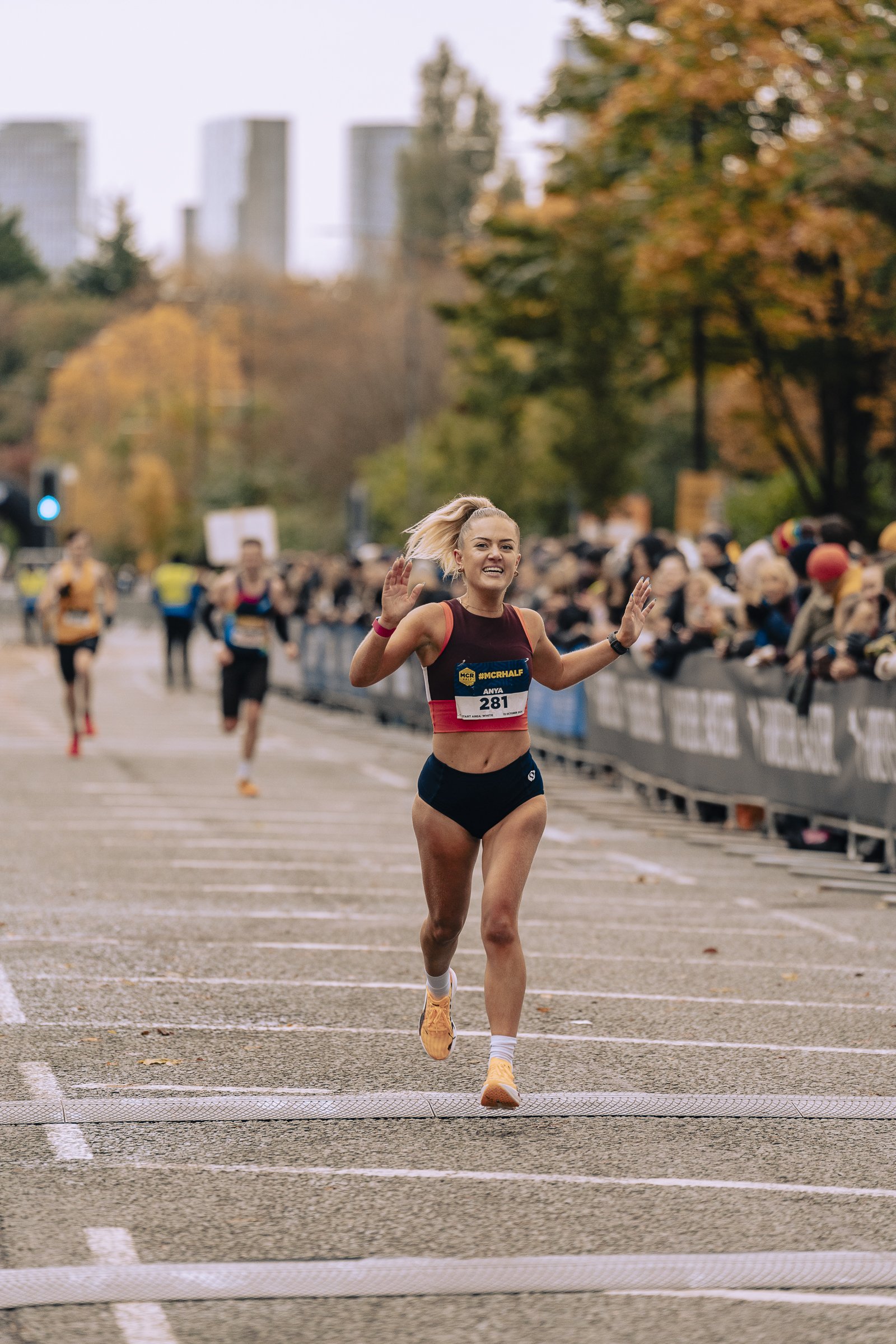Anya Culling on the Power of Recovery, Routine, and Sports Massage
Photo: Tristan Furney
When Anya Culling ran her first London Marathon in 2019, she crossed the finish line in four and a half hours — an experience that quietly lit the fuse. By 2024, she was lining up with the elites, finishing 16th in the women’s race. This year, she chose to run in the mass event, embracing the atmosphere, culture and community that first made her fall in love with running. The result? Sixth fastest female overall — and, more importantly, her happiest London Marathon yet.
Just a 3 weeks later, she clocked 1:16 to finish second at the Hackney Half. One of the constants behind these performances? A training routine built on consistency, recovery, and regular sports massage — the often overlooked tool that helps keep her body strong, balanced and injury-free.
We caught up with Anya to talk about how she balances hard training with smart recovery — and why taking care of her body has become just as important as the miles she puts in.
Follow Anya on Instagram and Strava
Q: Anya, how important is recovery in your marathon training?
A: I always say the key to successful marathon training is recovering as hard as you train. It’s all about that balance of training hard enough that you build your fitness, but recover well enough so that you are ready and motivated to train again the next day. Recovery is what allows my body to absorb the training and come back stronger. More isn’t always better — sometimes the best thing I can do for my running is to recover and adapt to the hard training.
Photo by Tommy Leaming
Q: What role does sports massage play in your recovery routine?
A: It’s like hitting the reset button on my legs. I don’t think I could have trained as constantly without regular sports massages. I try to get a massage every couple of weeks, or more if my calves start throwing tantrums. It helps flush out my tired muscles, keep everything moving, and it’s a great way to give my body some attention if you have any small niggles because they become issues.
Q: How does sports massage help you stay injury-free during heavy marathon training blocks?
A: It’s great for loosening any strained muscles early on — as soon as any tightness feels like it might limit my range of movement, I get a massage before that tight spot turns into a full-blown drama queen. My massage therapist often picks up on things I haven’t even noticed yet, any imbalances or if one side of my body isn’t firing like the other. They often recommend exercises and stretches to help, too. It’s definitely helped me avoid injuries and keep my training consistent.
Photo by Jerry Sun
Q: Do you use sports massage differently in different phases of training — like base building, peak weeks, or taper?
A: Yes, I adjust based on where I’m at in my training cycle. When base building, my muscles don’t tend to be as beaten up. I use massages here more for maintenance. When I am in the nitty gritty of a training block and my mileage is higher, it’s when I really feel the need for these massages. Peak weeks call for deeper, more focused work to manage specific areas. And in the taper I always get a massage before a race to flush out the muscles, it’s gentler and more about priming the body.
Q: How do you feel immediately after a massage session?
A: There’s often a sense of release, both physically and mentally. My body feels looser but after the zen I also feel a renewed sense of motivation. I have had sports massages before that feel very clinical and less relaxing, the whole MASAJ experience really helps promote a sense of calm that extends to the mind. Knowing that I am taking care of my body, makes me think my body will take care of me when the going gets tough in training.
Photo by Julia Guedes
Q: Have you had any specific moments where sports massage made a clear difference to your performance or recovery?
A: Yes! Before the London marathon, in the taper week I had classic maranoia where you wake up and panic about a phantom pain, we have all been there! Suddenly my tendons were so tight they were threatening a mutiny. One magic massage later released it completely, and I went into the race feeling balanced and strong and ran my fastest marathon in London yet!
Q: What advice would you give other marathon runners about using sports massage effectively?
A: Don’t wait until you’re injured. Make it part of your routine. It’s much easier to maintain a healthy body than to fix one that’s already broken. And take the time to find a massage therapist who understands sports and the toll it puts on your body. As with all aspects of running; consistency is key.




